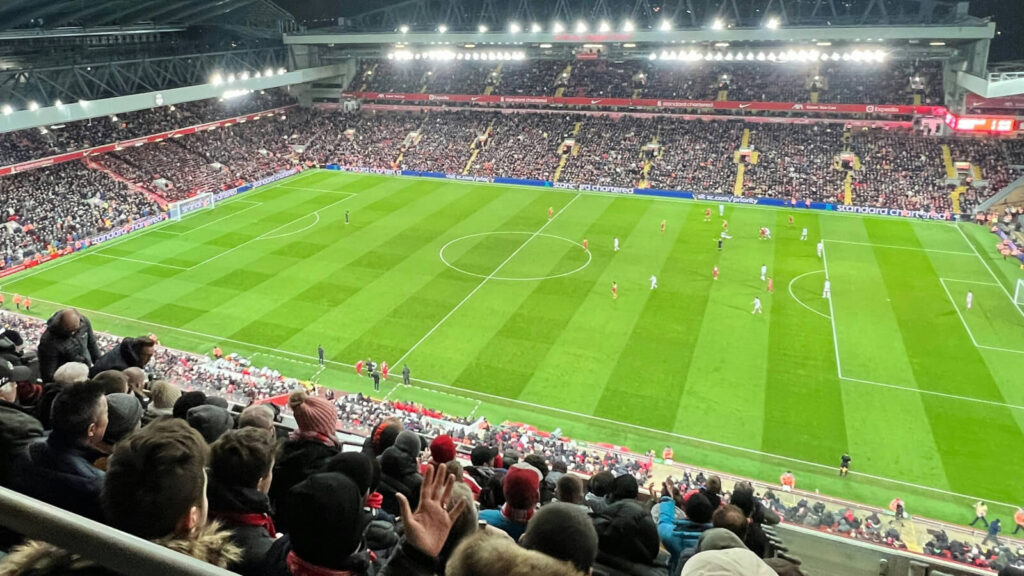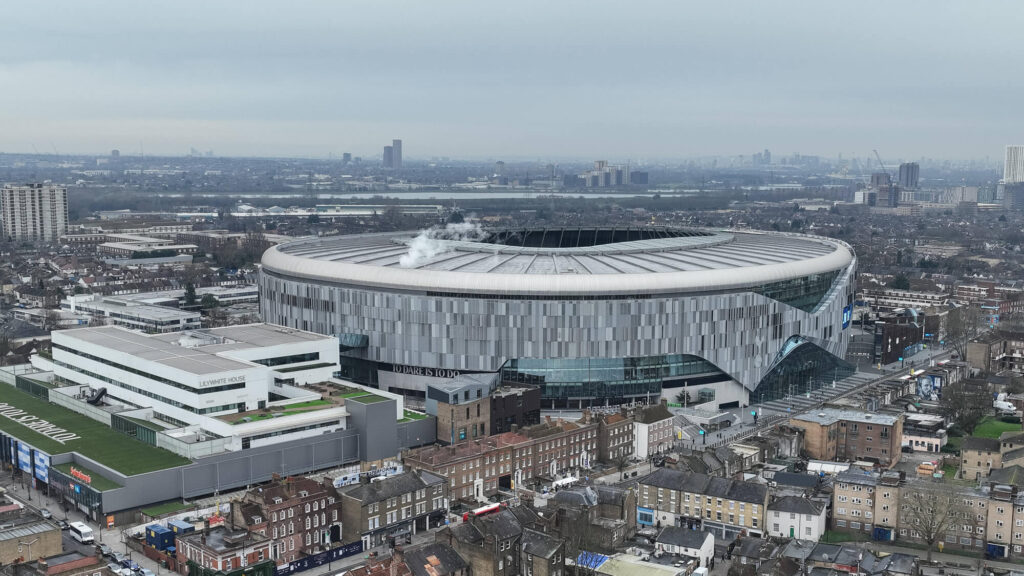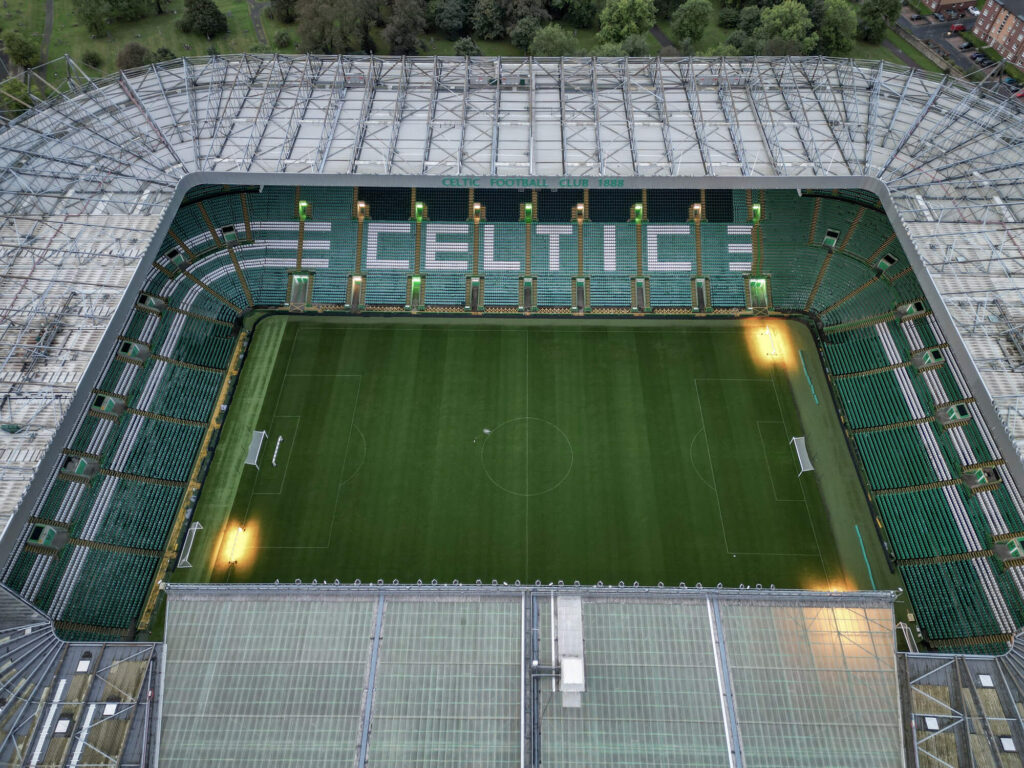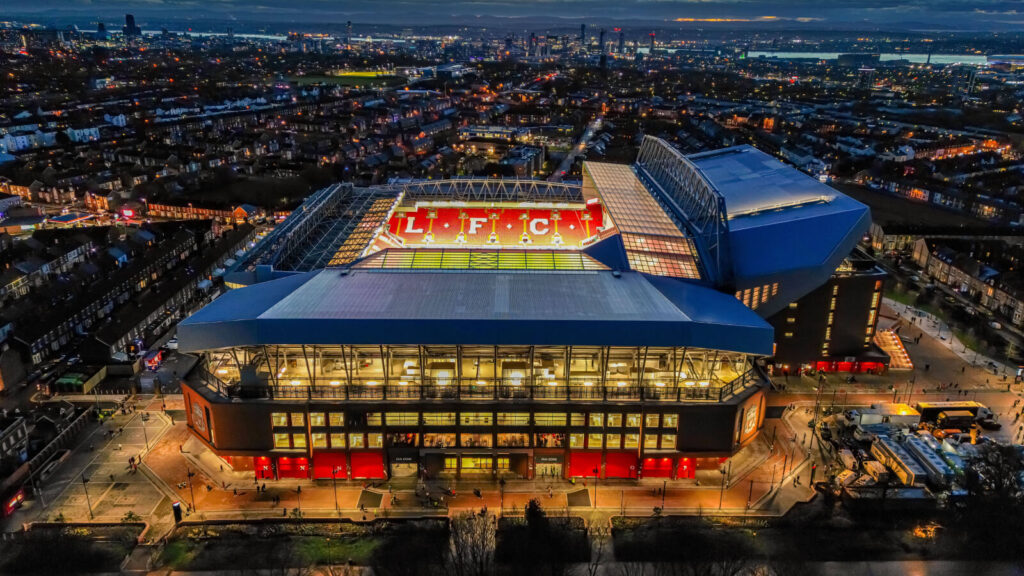The UK is that part of the world that has given Football a new direction with its amazing ground and crowd. Football grounds in the United Kingdom are not just stadiums but landmarks that have seen great moments, thrilling atmospheres, and fervent fan cultures. The UK is the home to some of the best stadiums in the world. And, each of these stadiums has its own story, significance, and history. Below is a detailed examination of five of the most iconic stadiums in the UK.
Old Trafford
Old Trafford, also known as the “Theatre of Dreams,” is in Manchester, England. It was opened in 1910 and has a seating capacity of around 74,310. It is the home ground of Manchester United. Old Trafford has hosted many FA Cup finals, and Champions League evenings, and was also one of the grounds for the 1966 World Cup. It has been the venue for legendary moments, such as Sir Bobby Charlton’s record goals and the thrilling 1999 Champions League semi-final comeback.

During the 1994, and 1996 period Old Trafford was the venue of demand as it hosted many semifinals and finals of the major tournaments. It has added a significant name to the history of football in the UK.

The stadium, designed by Archibald Leitch, has been expanded several times. One of the distinguishing features is the Sir Alex Ferguson Stand, while the stadium’s immaculate grass pitch is groomed with hybrid technology. The Stretford End is renowned for its ardent fans. Easy access is available, with trams and buses providing an effortless connection.
Old Trafford is a huge contributor to the economy of Manchester. It stimulates tourism and businesses within the region. It is a critical element of Manchester United’s global profile. It is the biggest club stadium in England. Cristiano Ronaldo once described it as “one of the most special places in football.”
Wembley Stadium
Wembley Stadium, home of English football, is based in London. It opened in 2007 (as a replacement for the original Wembley constructed in 1923) and has a seating capacity of 90,000, with England national team games being played there. Wembley has played host to key events such as the 1966 World Cup Final, several Champions League finals, and iconic FA Cup finals. It was the venue for England’s sole World Cup triumph.

During 1966 the stadium gave a lot of good moments to the people of the UK and who can forget the famous FIFA World Cup final victory of England here? Wembley was designed by Foster + Partners and Populous and is renowned for its 133-meter-tall arch. The stadium is equipped with a retractable roof and state-of-the-art pitch technology. Wembley has great sightlines in every seat. The transport networks, including Wembley Park Station, facilitate easy access.
It earns massive revenues from sporting and entertainment activities. Wembley’s reach includes music, where it has been used for concerts of world legends. It has the record for the largest attendance at an FA Cup final (126,047 in 1923). Pele referred to it as “the cathedral of football.”
Anfield
Anfield is situated in Liverpool and has been the home of Liverpool FC since 1892. The stadium has a capacity of 54,074. Anfield has witnessed legendary European nights, such as Liverpool’s comeback against Barcelona in 2019. It has also hosted domestic cup finals and major league matches.

Anfield has become the synonym for Liverpool because of their association with the club for so long. The stadium is famous for its towering Main Stand and the legendary Kop Stand, which creates an intimidating atmosphere for opponents. “You’ll Never Walk Alone” before kickoff is one of football’s most famous traditions. Anfield is well connected by train and bus routes.
Liverpool’s global reputation is linked to Anfield’s legacy. It plays a vital role in the local economy and tourism. Bill Shankly’s legacy at the club is immortalized outside the stadium. Steven Gerrard referred to Anfield as “a magical place.”
Tottenham Hotspur Stadium
Opened in 2019, this cutting-edge stadium in London is Tottenham Hotspur FC’s home and has a seating capacity of 62,850. It was constructed on the former site of White Hart Lane and has already seen Premier League and Champions League matches as well as NFL games.

The stadium’s South Stand is the largest single-tier stand in the UK. It has the world’s first retractable football pitch, which opens up to an artificial NFL surface. Its bowl-shaped, modern design offers a close-to-the-action viewing experience. It has Europe’s longest bar and a microbrewery. The stadium is conveniently accessible on the London Underground and Overground.

It has revolutionized Tottenham’s economy, attracting international visitors. The stadium is a technological wonder and a standard for contemporary venues.
Celtic Park
Situated in Glasgow, Scotland, Celtic Park is Celtic FC’s home ground with a capacity of 60,411. Celtic Park has been home to renowned Old Firm derbies and European nights. It was pivotal in Celtic’s 1967 European Cup victory.

The football stadium also known as the paradise for football watchers is very unique and has added a lot to the rich history of UK football. Celtic Park has a famous main stand and raked seating that increases the atmosphere. The stadium is famous for its fanatical fans and shakes with chanting. Easy access is provided by public transport links. Celtic Park is an icon of Glasgow football culture and adds to local trade. Sir Alex Ferguson once stated the noise at Celtic Park was “unbelievable.”
Why are these Stadiums so Famous?
All the above-mentioned stadiums in the UK are very famous and renowned. It is because they are home to some of the biggest clubs in the world. From hosting some of the biggest superstars of the game like Neymar, and Lionel Messi these stadiums are truly the best. They offer an amazing fan experience and the waves of the shouts made here are part of history.
Architecture is the highlight of most of the stadiums mentioned here. Each stadium has a cultural impact over the stadiums mentioned here and the facts associated with the stadiums make them more attractive. All in all, these stadiums are historic and the matches played here are one of the best.
If you want to read about the most iconic stadiums in Europe, outside the UK, read in this article.
Conclusion
The UK is the site of some of football’s most historic and legendary stadiums. All of these stadiums have had some influence on the footballing world, both in Britain and the rest of the globe. Through their live atmospheres, innovative designs, or economic influence, these stadiums remain at the center of the beautiful game. Football supporters from all over the world aspire to see these legendary pitches, so they are eternally iconic representations of the sport.
